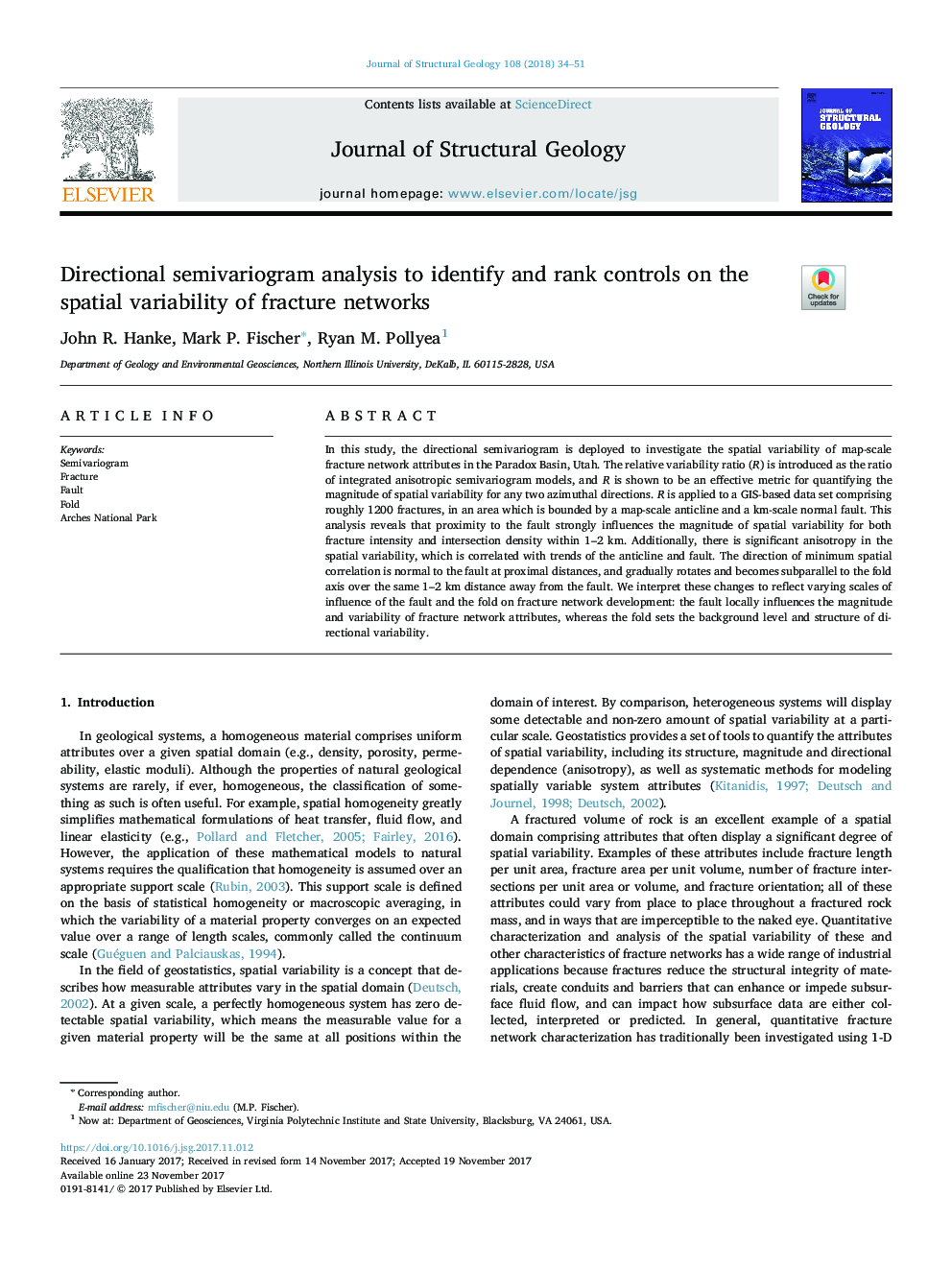| Article ID | Journal | Published Year | Pages | File Type |
|---|---|---|---|---|
| 8914469 | Journal of Structural Geology | 2018 | 18 Pages |
Abstract
In this study, the directional semivariogram is deployed to investigate the spatial variability of map-scale fracture network attributes in the Paradox Basin, Utah. The relative variability ratio (R) is introduced as the ratio of integrated anisotropic semivariogram models, and R is shown to be an effective metric for quantifying the magnitude of spatial variability for any two azimuthal directions. R is applied to a GIS-based data set comprising roughly 1200 fractures, in an area which is bounded by a map-scale anticline and a km-scale normal fault. This analysis reveals that proximity to the fault strongly influences the magnitude of spatial variability for both fracture intensity and intersection density within 1-2Â km. Additionally, there is significant anisotropy in the spatial variability, which is correlated with trends of the anticline and fault. The direction of minimum spatial correlation is normal to the fault at proximal distances, and gradually rotates and becomes subparallel to the fold axis over the same 1-2Â km distance away from the fault. We interpret these changes to reflect varying scales of influence of the fault and the fold on fracture network development: the fault locally influences the magnitude and variability of fracture network attributes, whereas the fold sets the background level and structure of directional variability.
Keywords
Related Topics
Physical Sciences and Engineering
Earth and Planetary Sciences
Geology
Authors
John R. Hanke, Mark P. Fischer, Ryan M. Pollyea,
